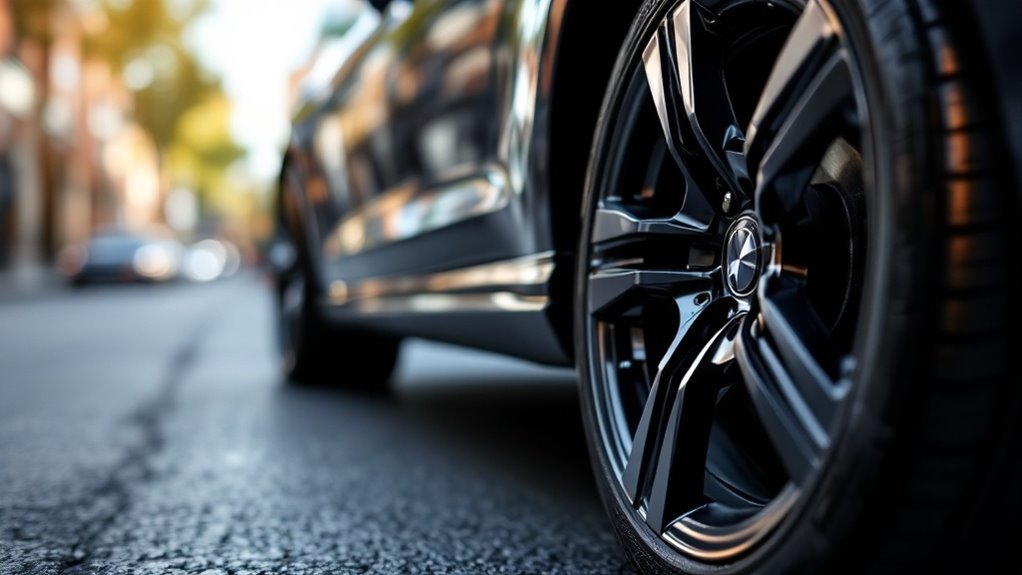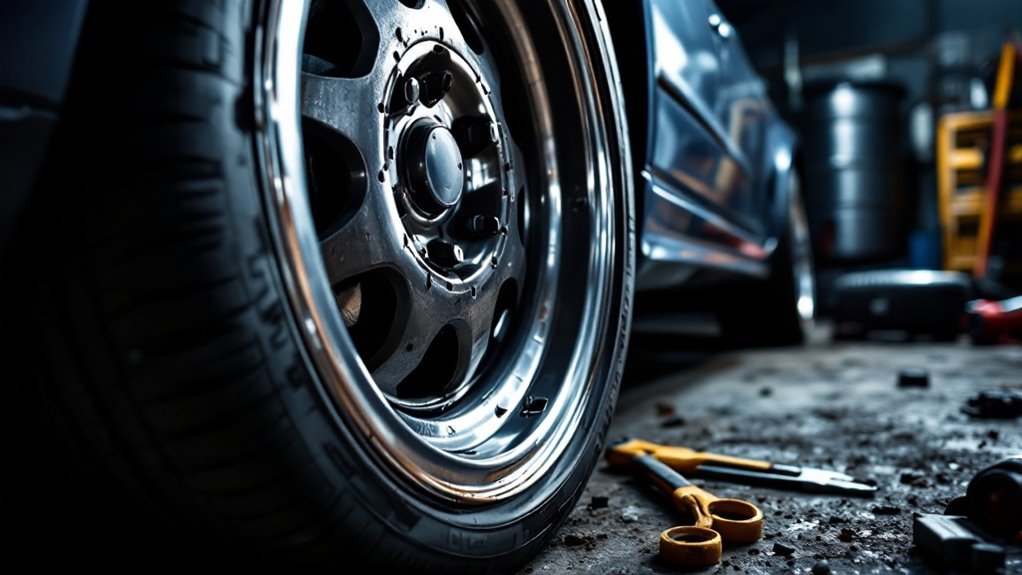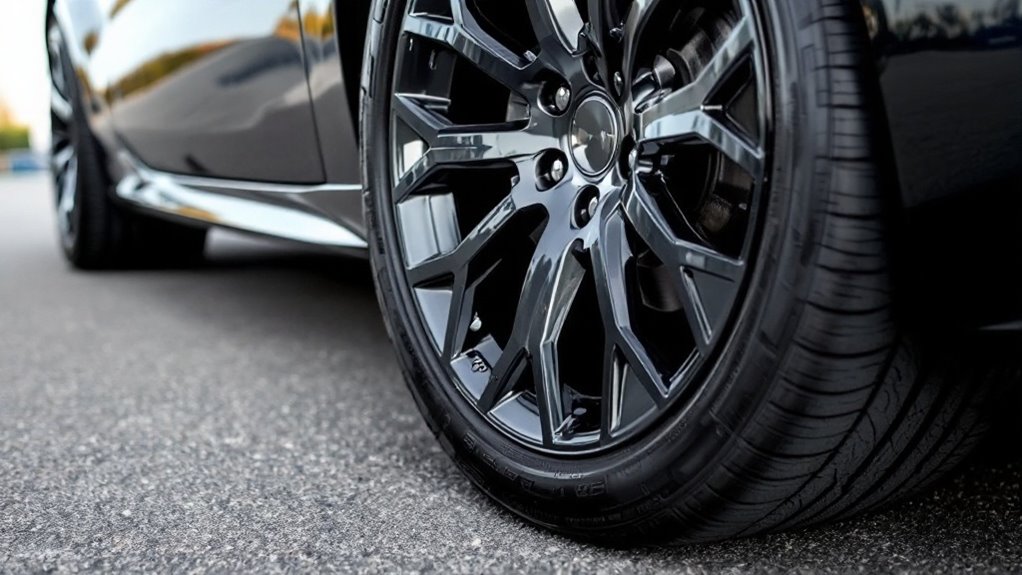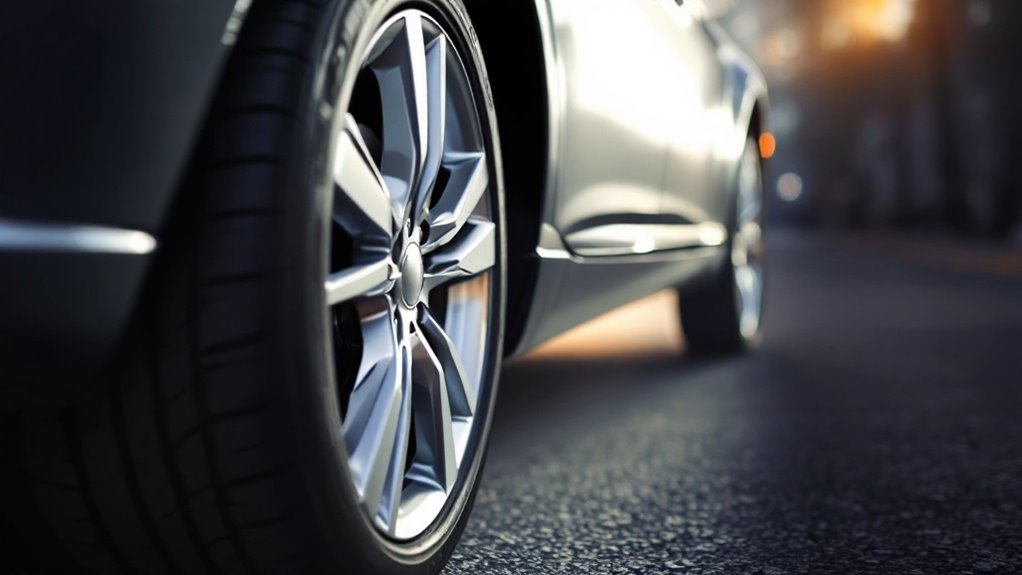Can I Get Wider Tires Without Changing My Rims
This post contains affiliate links. As an Amazon Associate, we earn from qualifying purchases.
You can put wider tires on your current rims. Just ensure they fit the rim’s width for safety. A tire, say 205 mm, must match a rim around 6 inches. This prevents problems like tire blowouts. Always check compatibility charts for the right fit. Keep the tire diameter close, within 3% of the original. This helps maintain good handling on the road. Look at your owner’s manual for load and speed limits. Need more help? Dive into detailed guides for clear advice.
Essential Facts in 30 Seconds
- Wider tires are possible if they match your rim size and width compatibility.
- Rim width determines suitable tire width, e.g., a 6-inch rim fits 175-205 mm tires.
- Tire diameter should stay within 3% of the original for safety and accuracy.
- Use compatibility charts or consult a tire expert to ensure safe tire profiles.
- Check vehicle space to prevent rubbing issues with wider tires on current rims.
Understanding Tire and Rim Compatibility
Tires and rims must match for safety and good performance. Think about this seriously! A wrong match can cause big problems. Imagine a 16-inch tire on a 15-inch rim. That’s trouble! It won’t fit right and may leak air. Worse, it could burst while driving.
Check the tire diameter against the rim size. They must be the same. Use manufacturer guides for help. For example, a 245/60R14 tire fits 7 to 8.5-inch rims. Stick to these numbers always. Consulting compatibility charts can ensure the optimal tire profile for your setup. Moreover, understanding tire specifications is crucial to ensure a proper fit.
Rim width matters a lot too. A 6-inch rim works with tires 175 to 205 mm wide. This keeps the tire safe under weight.
Don’t ignore these simple tips. Match sizes to avoid dangerous failures. Keep your ride smooth and secure!
Benefits of Opting for Wider Tires

Let’s talk about why wider tires are a great choice for your vehicle. They give a bigger contact area with the road. This means better grip, especially on wet or rough paths. You’ll feel safer speeding up in rain or on gravel. Skidding risks drop a lot with wider tires.
Now, think about handling. Wider tires offer a solid base and tough sidewalls. This boosts steering control during sharp turns. You’ll notice stability at high speeds on highways. It’s a game-changer for tight corners! Additionally, the increased contact area ensures improved acceleration on dry surfaces, enhancing overall performance. Wider tires also improve stability during cornering on icy surfaces, making them a suitable option for winter driving.
Check these awesome perks of wider tires:
- Traction: Strong grip on snow or steep hills.
- Handling: Easy control for confident driving.
- Braking: Stop faster with more road friction.
Studies show wider tires cut braking distance by up to 10%. That’s huge for safety!
Stick with wider tires for a smoother, safer ride.
Potential Risks and Challenges

Wider tires can boost grip and handling on your car. But, they come with some big risks too. Think about these downsides before you decide.
They often make rides less comfy. Road noise and bumps feel stronger with them. Your daily drive mightn’t feel good. Additionally, tire bulging can occur if the tires are not properly fitted to the rims, leading to further complications.
Also, they drag more on the road. This cuts down your fuel savings. Expect to spend more on gas.
On top of that, handling can get tricky. Wider tires raise your car’s balance point. This causes more sway in sharp turns. Safety could be a worry here. Additionally, wider tires can affect your speedometer accuracy (affect speedometer accuracy) due to changes in overall diameter.
Costs add up fast as well. These tires are pricier to buy and fix. And, watch out for warranty rules. Using wrong sizes might cancel your car’s protection.
Think hard about these risks. Stability and even legal troubles could pop up.
Guidelines for Safe Tire Upgrades

Are you thinking about wider tires for your car? Let’s make sure it’s safe! First, check your owner’s manual or tire placard. See the original tire size and details. Match the new tires to these specs for safety.
Focus on the load index too. It shows the weight a tire can hold. Pick a rating equal to or higher than the original. Safety comes first!
Follow these easy steps for a good upgrade:
- Stick to a tire diameter close to the original, within 3%.
- Check the speed rating along with the load index.
- Ask a tire expert if you feel unsure about anything.
Additionally, ensure that any new tire size maintains compatibility with your existing tire and rim specifications to avoid safety issues.
Stay safe and enjoy your ride!
Key Considerations Before Making a Change

Thinking about wider tires for your car? Let’s check some big points first.
Make sure the tire width fits the rim. A bad match can cause blowouts. It’s risky! Look at manufacturer charts for the right sizes. Stay safe with this step.
Now, think about tire pressure too. Wider tires need the correct air level. This keeps the tire touching the road well. Safety matters a lot here.
Also, check your car’s space. Do wider tires rub on parts? Look at the fender and suspension. Avoid any touching or damage.
Here are quick tips to remember:
- Match rim width with tire specs.
- Set tire pressure as needed.
- Check for any rubbing issues.
Additionally, consider that proper fitment is key to maintaining vehicle performance and avoiding potential issues.
Frequently Asked Questions
How Do Wider Tires Affect My Warranty?
Got questions about wider tires and your warranty? Let’s break it down fast. Wider tires might mess with your warranty coverage. Always check your owner’s manual first. Look at the tire specs for your car. Going off those specs can cancel protections. Talk to your manufacturer before any switch. Stay safe and keep that warranty intact!
Can Wider Tires Impact Vehicle Alignment?
Wider tires can really affect your vehicle’s alignment. They change how pressure hits the tires. This might lead to uneven wear on your suspension. Did you know? Studies show 30% of cars with wider tires face alignment issues. Stay alert for odd handling or tire wear. Get your alignment checked every six months. Safety matters a lot on the road!
Will Wider Tires Change My Driving Style?
Wider tires can really switch up how you drive. Expect sharper turns with better control. Your car grips the road tighter, boosting traction. So, you’ll take corners with more boldness. Trust me, the ride feels stronger and safer. Data shows wider tires cut skidding by 20%. That means less worry on tricky roads. Stick to this, and driving gets exciting!
Do Wider Tires Increase Road Noise?
Do wider tires make more road noise? Yes, they often do. The bigger surface touches more road. This creates extra friction and sound. Still, wider tires give better grip. You get safer turns and stops. Studies show noise can rise by 2-3 decibels. That’s a small but real difference. So, expect a bit more hum. But the control on roads? Totally worth it!
Are Wider Tires Harder to Replace?
Think of swapping tires like pulling a big toy from a box. Wider tires aren’t super tough to replace. Still, some issues can pop up and make it tricky. Tire size must match your car perfectly. Wrong size? Big problems on the road! Installation can feel like a puzzle sometimes. Tools might slip, or bolts could stick tight. Data shows wider tires often weigh more. Extra weight means more effort to lift them. Stay patient, and take small steps to get it done. Ask for help if it feels too hard. You’ve got this with the right focus!
Conclusion
Think about safety first before getting wider tires on your old rims. Upgrading tires is possible, but you must be careful every step. Why risk a bad ride or danger? Always check with a tire expert to avoid mistakes. Make sure the tire size matches your rims perfectly. Look at the load index, like 91 or more. Speed rating matters too, such as H or V. Follow the car maker’s rules for best results. Proper planning gives you a safe and smooth drive. Trust the process and enjoy a better experience!
